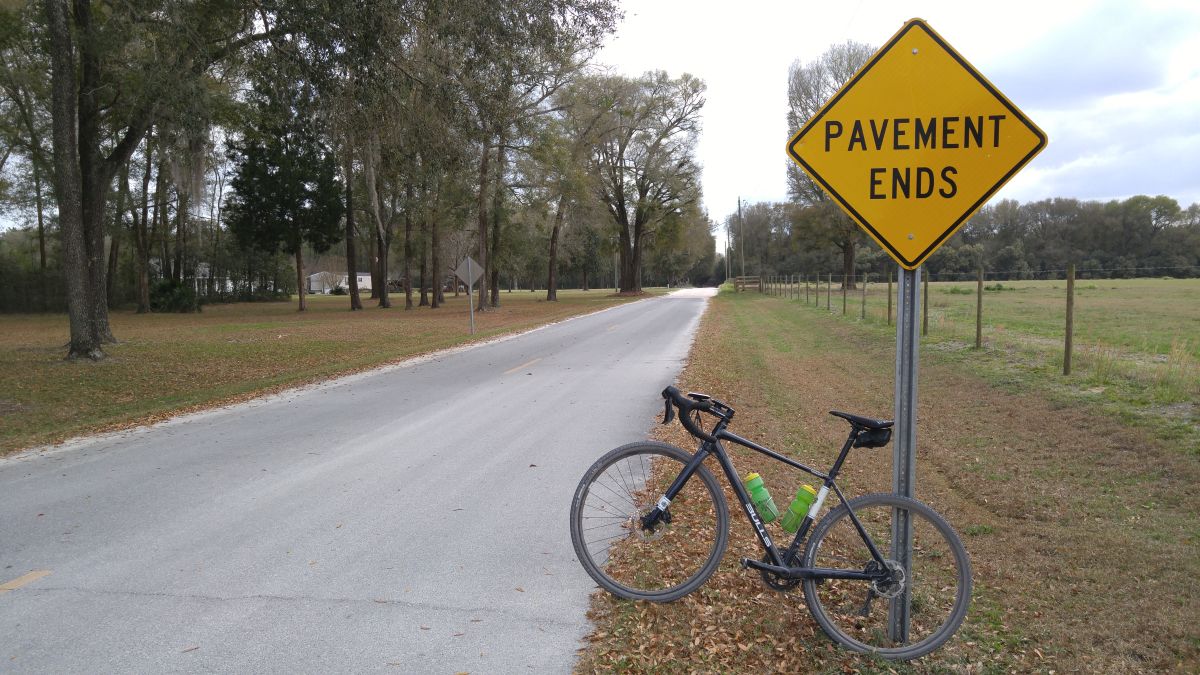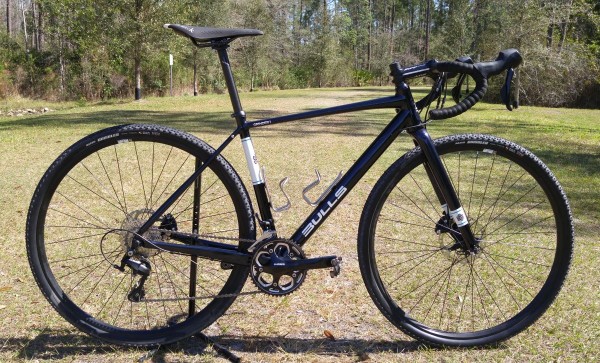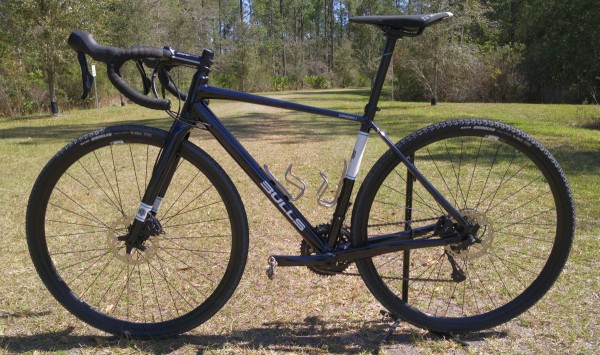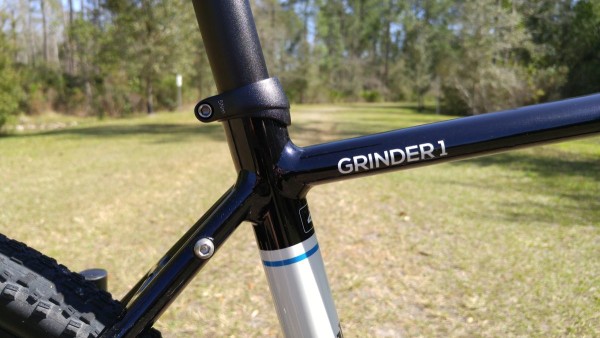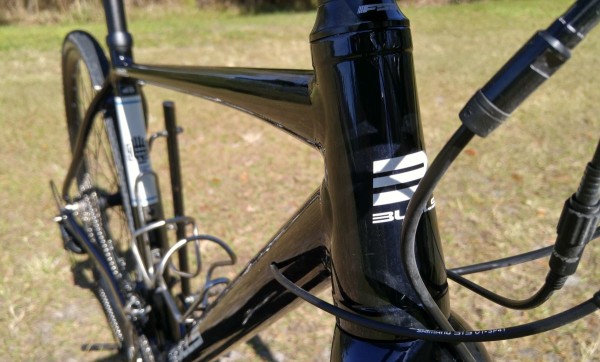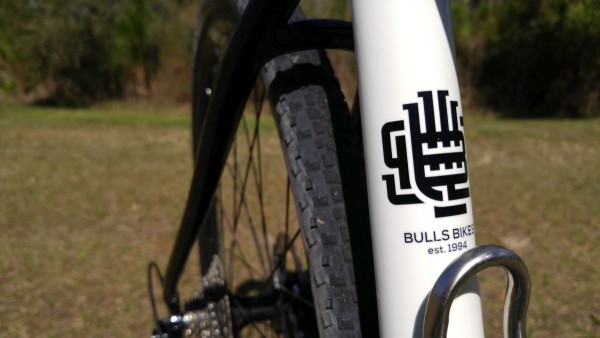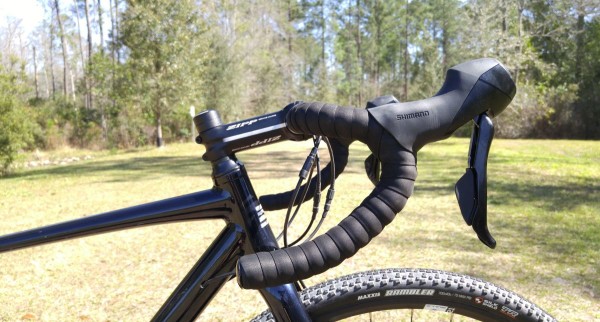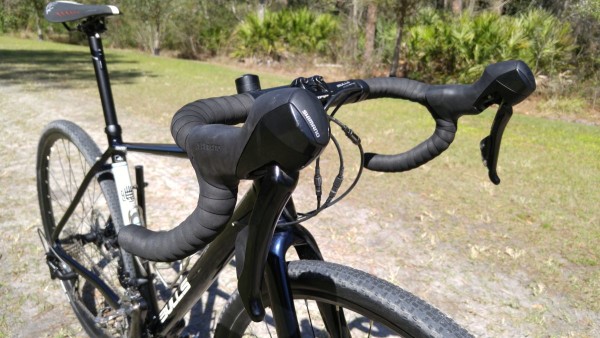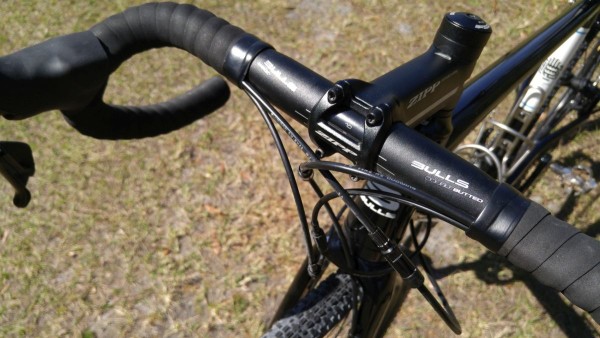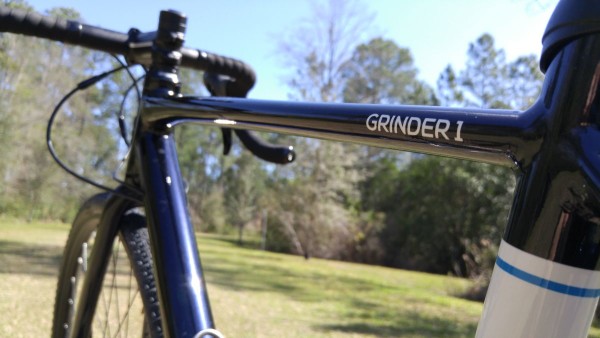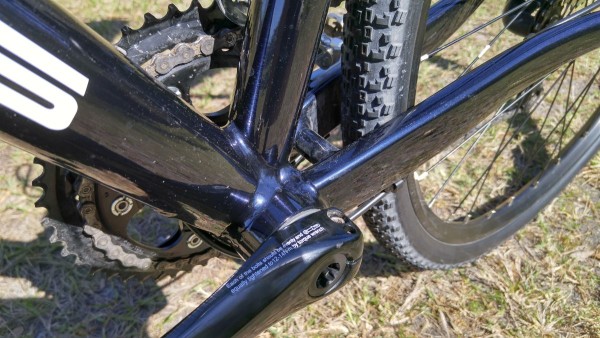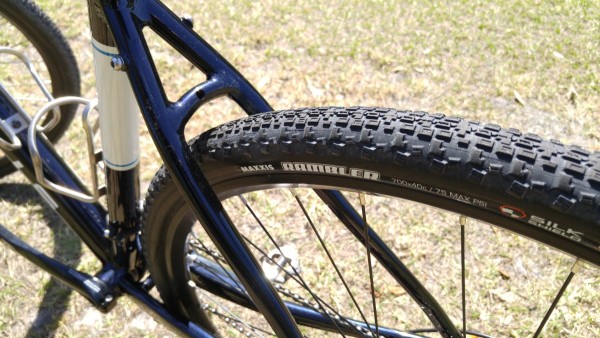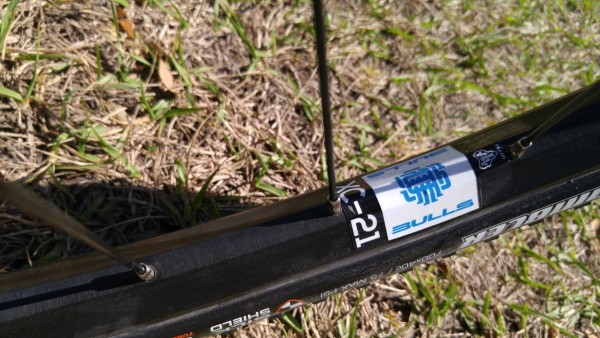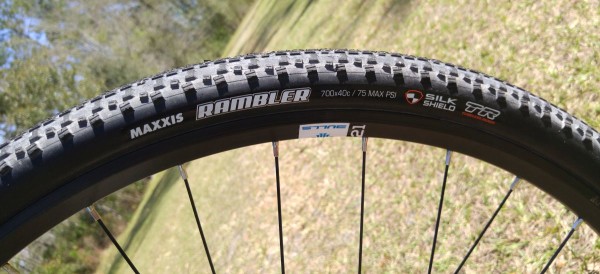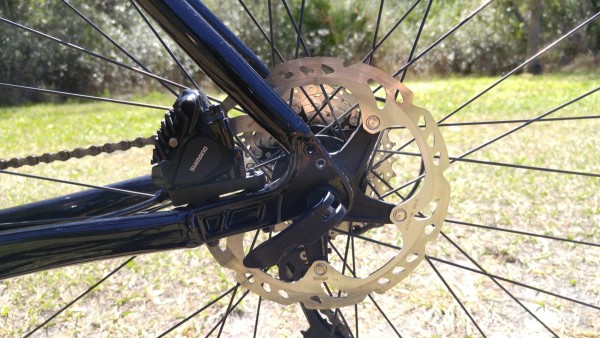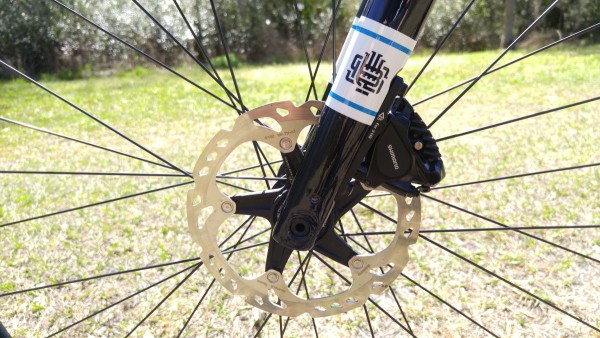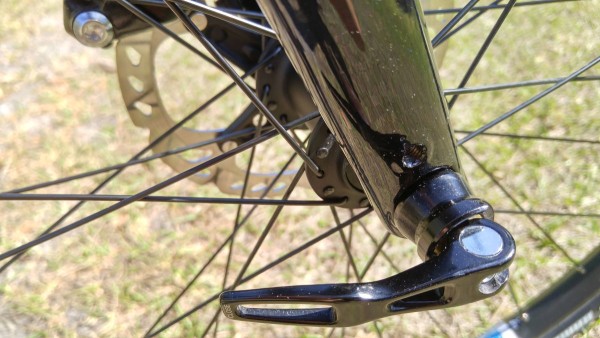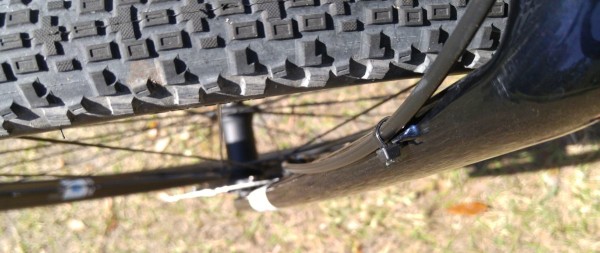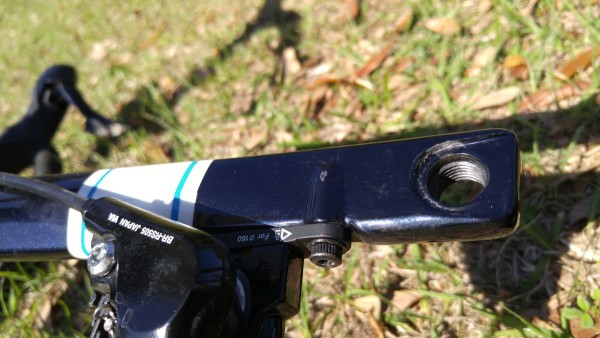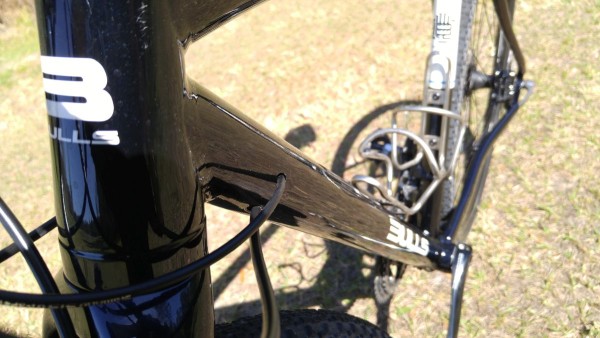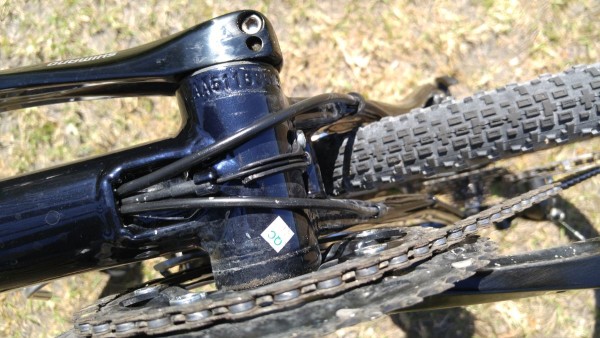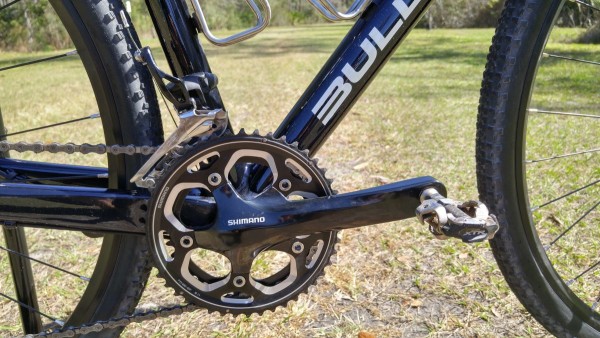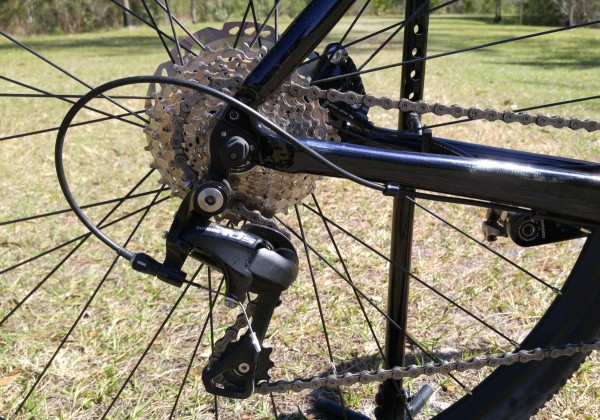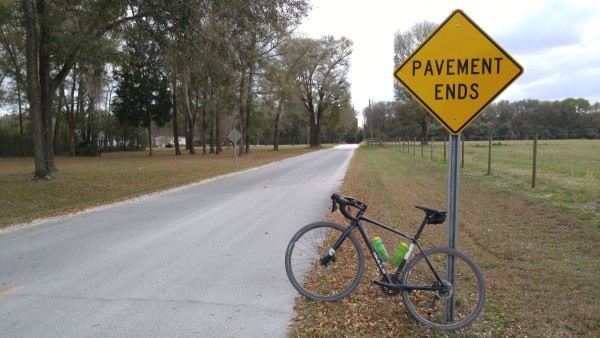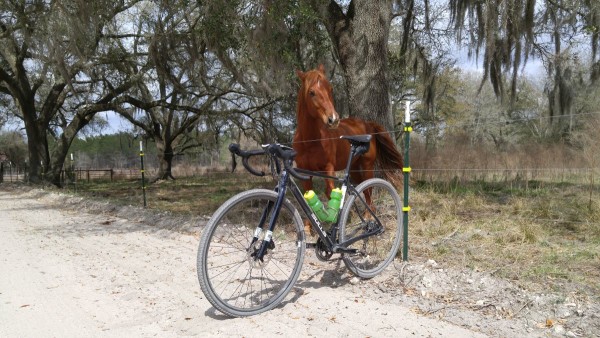Bulls Bikes is a brand that may be unfamiliar to cyclists in the USA, but to Germany and the European market, the company has been around since 1994. The company is best known for quality road and mountain bikes at affordable prices. Zach captured details of the company’s top end Wild Edge full-suspension MTB at Sea Otter 2015, during the company’s initial foray into the USA market.
Since that time, Bulls Bikes has gradually increased their range of product available to the USA market, and now offers two gravel bikes – Grinder 1 and Grinder 2. Both bikes feature the same 7005 series aluminum, double butted frameset. Differentiating them are their paint liveries and respective groupsets; Shimano’s Ultegra mechanical / hydraulic brake groupset on the Grinder 2, and Shimano’s 105 mechanical / hydraulic brake 11-speed groupset on the Grinder 1. Bulls Bikes sent us a Grinder 1 to review, click on through to see how it fared…
I have a preference for a more aggressive fit. That means, I typically choose the smallest bike I can get away with, and use a setback seatpost and longer stem to attain my ideal position. Clearly this isn’t for everyone, or the internet bike fitters who frequent BikeRumor 🙂 The seatpost supplied with the Bulls Grinder 1 isn’t of the setback type, and while it was on the limit of horizontal setback with my personal Arione saddle, it got the job done.
The Grinder 1 is available in five sizes, with effective top tube length starting at 53.6cm and ending at 60.4cm. Standing at 5’11” with an 32″ inseam, I fall between the size 49 (53.5cm top tube) and 52cm (55.2cm top tube).
The deciding factor was the shorter head tube of the size 49, which measures 135mm in length. Incidentally, the Bulls Bike website “What is my frame size” selector insisted I choose the size 52 (55.2cm top tube). Sometimes you have to cut the bull and break the rules…
The Bulls Bikes Grinder 1 complete bike is equipped with Shimano’s workhorse 105 11-speed mechanical groupset and their latest ST-RS505 hydraulic shifter / brake levers and BR-RS505 hydraulic brakes.
The distinctive shape of Shimano’s 105 RS505 shifter levers are immediately noticeable. They are quite bulbous compared to the RS685 Ultegra hydraulic brake levers, but the hood shape proved to be very comfortable.
Don’t expect Ultegra level performance from the 105 build kit. Shifting doesn’t feel as crisp and is a little vague feeling versus a comparable Ultegra drivetrain, but the lower end 105 group stayed in adjustment for the duration of the review and fired off reliable gear shifts time after time.
Finishing out the build are Bulls branded cockpit parts (I substituted the supplied 90mm long Bulls stem for a 110mm Zipp stem for the review) and WTB XC-21D disc brake rims / Formula hubs fitted with Maxxis Rambler 700c x 40mm 60tpi gravel specific tires.
Topping off the Grinder 1 is an attractive dark blue paint finish with subtle branding and white panel with contrasting blue accents. The flattened top tube of the Grinder 1 is noticeable in the above photo, and would come in handy for those moments when you need to shoulder the bike. Welds on the Grinder 1’s 7005 series aluminum frame are clean and weight has been shed where possible.
At about 155lbs, I am not a powerhouse rider, but the oversized pressfit bottom bracket junction refused to creak, groan or flex during repeated out of the saddle efforts. There is plenty of tire clearance between the chainstays with a 700c x 40mm wide tire mounted.
With tire pressure inflated between 35psi and 40psi, the Grinder 1 provided a very comfortable and pleasant ride across every road surface. One of my review rides included 125 miles of solo fun aboard this bike. I finished the ride tired, but it wasn’t due to a beatdown from the aluminum frameset. Adding to the flexibility of the Grinder 1, the flattened seat stays (they taper towards the seat tube junction) are fitted with convenient built-in rack mounts – the Grinder 1 easily doubles as a sweet commuter bike.
The Bulls branded WTB XC-21D rims / Formula hubs are laced with 32 spokes and shod with the excellent Maxxis Rambler tire. You can read a full review of the 120tpi version of the Maxxis Rambler over at Gravel Cyclist.
Bulls fit the Grinder 1’s wheels with the 60tpi version of the Rambler, which feature Maxxis’ Silk Shield puncture protection technology. While a little heavy, the provided wheels rolled nicely once up to speed and stayed true for the duration of the review. Converting the wheels to tubeless is a cheap and easy way of dropping some weight, and the addition of sealant provides a certain measure of puncture protection. Ideally, a lighter set of wheels would drop a nice chunk of weight from the bike, but for the asking price of this bike, the wheelset and supplied tires are a great starting point.
The Formula hubs utilize Shimano’s center lock standard for rotor installation, and are fitted with the company’s excellent Icetech brake rotors in 160mm. Note the flat-mount disc brake and discreet mounting points for rack or fenders located just above the rear dropout.
Front and rear, Shimano’s excellent flat-mount BR-RS505 hydraulic brake calipers provide all of the stopping power you will ever need. Unlike the electronic Di2 version of Shimano’s hydraulic brake levers, the 105 and Ultegra mechanical shift / hydraulic brake levers have superb brake feel. There is no vague feeling of brake “hyperspace” as the lever travels at least a centimeter before the pads are engaged. Pad engagement is almost instant on the mechanical shifting levers, but offers plenty of modulation and control, with power increasing as you pull harder on the lever. One finger braking is a delight with the 105 mechanical / hydraulic shifter / brake lever combination.
The Bulls branded all-carbon fork with its 15mm thru axle and well-hidden fender eyelets helped smooth out the front end of the bike. However, the supplied Formula thru axle quick release is less than desirable. It lacks the smooth cam action of a Rockshox Maxle Lite, and had a tendency for the lever to flop about the place – unless the skewer is cranked down overly hard, which makes removing the front wheel a little more difficult.
The brake cable for the front fork is routed externally and in front of the fork leg. While this makes for a clean cable run, it is aesthetically displeasing when you consider how nicely every other cable on the bike is routed. This minor quibble aside, the fork performed as expected. The thru axle interface is stiff, and the fork does a nice job of soaking up plenty of the bumps you’ll encounter riding dirt and gravel roads.
Another nice touch is the molded recess inside the fork leg to easily guide the front wheel into place. Without this feature, wheel swaps with a thru axle wheel can be a little tricky as you fumble to line everything up.
The rear hydraulic brake housing and shift housing are discreetly routed inside the Grinder 1’s frame. While internally routed cables are never a joy to replace, the housings are shielded from the potential contamination of mud and gunk.
Cable housings exit just ahead of the PF30 bottom bracket, with the rear derailleur and rear brake housing continuing their run externally and below the rear chainstays.
Shimano’s 11-speed RS500 crankset is fitted with 46 / 36 chainrings, which are perfectly sized for riding miles and miles of gravel roads. Far too often I’ve seen gravel bikes specified with a 50 tooth big chainring – which is fine for those who push bigger gears – or a road bike, but with the taller tires of a gravel bike, gear ratios change. All of a sudden that 50 tooth chainring becomes a lot harder to push.
The mechanical shifting prowess demonstrated by the 105’s front derailleur is a direct result of the trickle down from Shimano’s Ultegra and Dura-Ace groups. Shifts are fast and never missed a beat, aided by well-placed shifting ramps on the big chainring.
The rear derailleur spec’d is Shimano’s 11-speed 105 mid-cage unit, paired with an 11-32 105 level cassette. For extended periods of climbing, the 36 x 32 low gear works nicely, and the 46 x 11 gear is big enough for the average gravel descent. Optionally, the 36 tooth small chainring could be substituted for a 34 tooth ring for even steeper climbing.
The Bulls Grinder 1 tips the scales at 20.2lbs fitted with my personal King titanium cages, Shimano XTR pedals and Fizik Arione saddle (substituted for the stock Selle Royal Seta S1 saddle). The Bull’s website lists the Grinder 1 at 20.94lbs – nice to see a bike fall beneath the listed spec weight.
Priced at $US 1,799.00 for a complete bike, the Bulls Grinder 1 is a well-priced aluminum framed gravel bike perfect for blasting down your local gravel road.
Photos and article by Gravel Cyclist.
Jayson O’Mahoney is the Gravel Cyclist: A website about the Gravel Cycling Experience.
